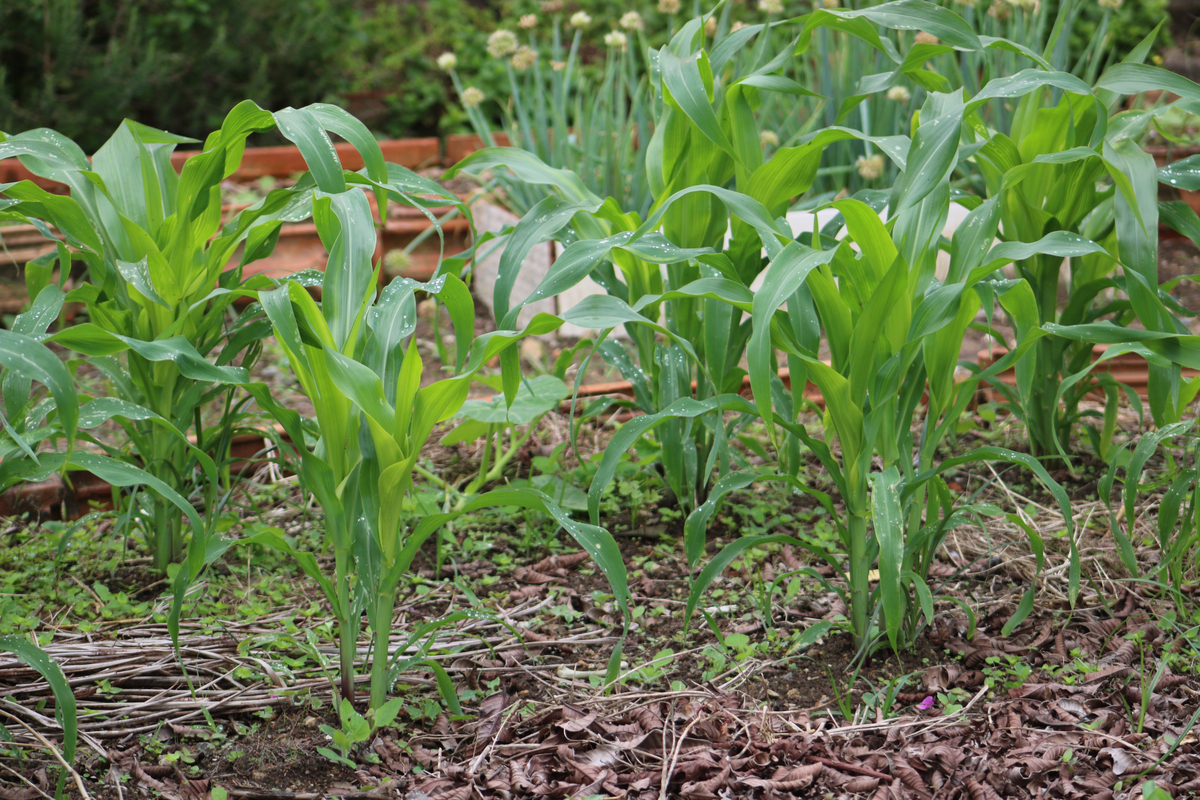Corn Companion Plants are a great way to increase the health and productivity of your corn plants. You can promote pollination, weed suppression, and pest control in your garden by choosing compatible companion plants.
This blog post will explore everything you need to know about Corn Companion Plants, from the best plants to choose to the benefits of companion planting.
So, let’s get started.
What Are Corn Companion Plants?
Corn companion plants are plants that, when planted near corn, can benefit the sweet corn crop. Sweet corn companion plants typically improve soil fertility, attract pollinators, and protect against pests. Plants like beans, sunflowers, marigolds, and squash can be excellent companions for sweet corn.
These companion plants provide sweet corn with additional nutrients, attract beneficial insects, and can act as a natural insect repellent. Additionally, some companion plants can provide shade or wind protection for the sweet corn crop, reducing plant stress and improving overall yields.
Nasturtiums make excellent sweet corn companion plant because of their colorful flowers that attract bees and other beneficial insects.

The Benefits of Companion Planting with Corn
Companion planting with corn can be a great way to maximize your garden’s productivity. This method of planting involves strategically growing different plants near one another to provide mutual benefits.
- Pollination: Corn is a wind-pollinated crop that requires a large area for adequate pollination. Planting companion plants that flower at the same time as corn can help to attract pollinators and increase the likelihood of pollination.
- Pest Control: Certain companion plants can act as natural deterrents for pests that may feed on sweet corn. Plants like marigolds, garlic, and basil repel insects such as aphids and whiteflies.
- Nutrient Cycling: Companion plants can help to keep the soil healthy by providing nutrients to corn and other crops. Legumes such as beans and peas have nodules on their roots that help to fix nitrogen in the ground. Grasses such as oats and barley can add organic matter and improve soil structure.
- Weed Control: Planting companion plants in between rows of sweet corn can help to reduce weeds and conserve moisture. Taller crops like sunflowers can shade out emerging weeds, while low-growing vegetables like radishes can act as “living mulch” to prevent weed growth.
- Soil Improvement: Companion planting with corn can improve soil fertility and structure by adding organic matter. Deep-rooted crops like alfalfa can help loosen heavy soils and break up the clay. Furthermore, planting various companion plants can increase biodiversity in the garden and create a more sustainable environment for the corn to thrive.
The Best Corn Companion Plants
When planting sweet corn, some companion plants can be added to your garden to improve the health of your crop. Legumes, such as beans and peas, are great companions for corn because they help increase the soil’s nitrogen content. Grasses, like oats and rye, can provide good ground cover and help reduce soil erosion.
Beans are an excellent choice for sweet corn companion plants because they add nitrogen to the soil and improve fertility. Beans also provide additional pollinators, which will help your corn plants yield more ears of corn. Planting beans near your corn can also help deter pests and diseases while providing additional support for the corn stalks.
How To Companion Plant with Corn
First, choose companion plants that provide the benefits you need for your corn crop. Legumes and grasses are excellent options for nitrogen-fixing abilities and organic matter in the soil. Other companion plants, such as corn beans, are also beneficial for pest and disease control.
Once you’ve chosen your companion plants, plant them near the corn crop. Planting the companion plants simultaneously with the corn helps ensure they’ll be established when they start growing. The closer the companion plants are produced to the corn, the better their protective effects will be.
Finally, pay attention to crop rotation and fertility management. Crop rotation helps reduce the risk of pests and diseases by moving susceptible crops away from areas where they have recently grown. On the other hand, fertility management ensures that soil health is maintained by applying appropriate amounts of fertilizer and compost.
Frequently Asked Questions
What Companion Plants Grow with Corn?
When choosing the best companion plants for sweet corn, it is essential to consider plants that can help improve the yield and health of your crop. Legumes, grasses, and corn bean combinations are popular options when selecting companion plants for corn. Legumes, such as soybeans, can provide much-needed nitrogen to the soil and help improve yield.
Conclusion
Companion planting is an effective and sustainable way to increase the yield of sweet corn. They are growing companion plants with corn to help repel pests and improve soil fertility and pollination.
By understanding how to use companion planting effectively, you can ensure a high yield of healthy corn and reap the rewards of a successful harvest.
